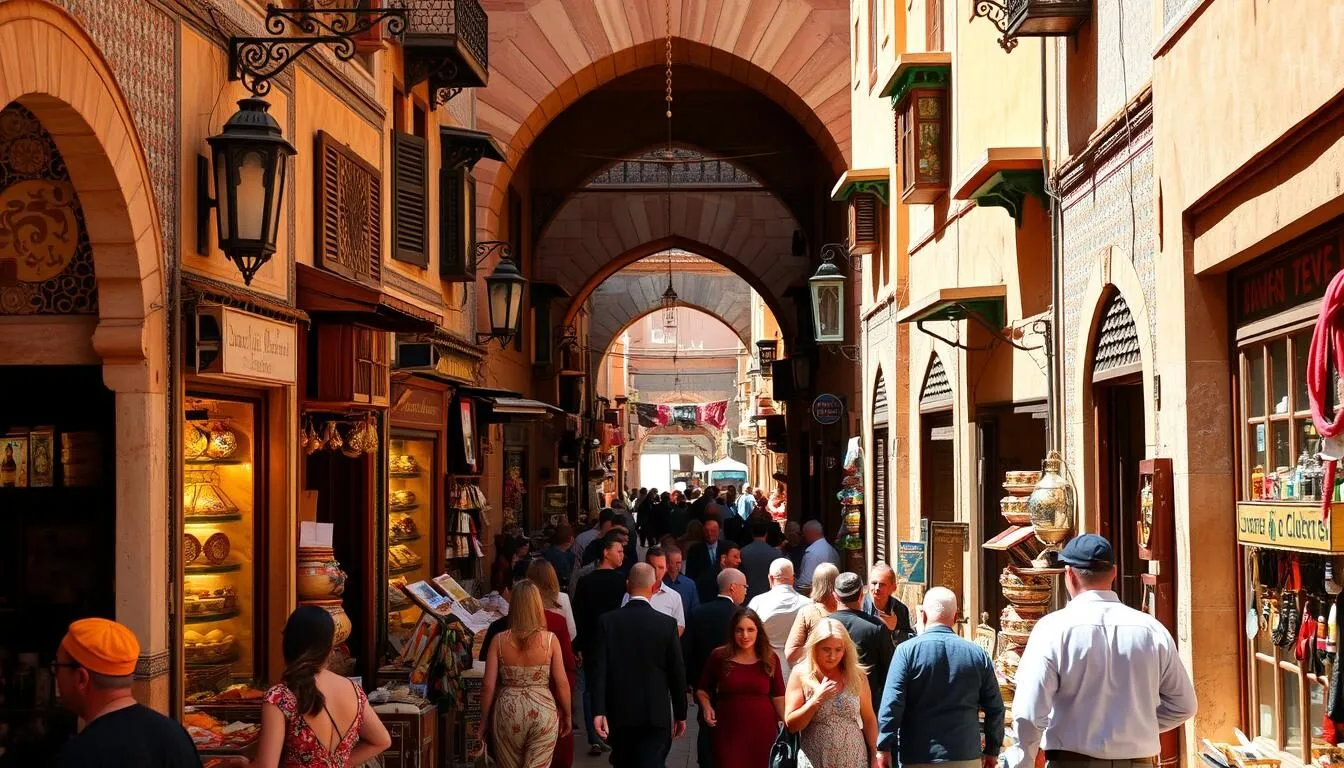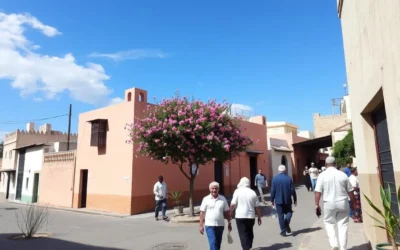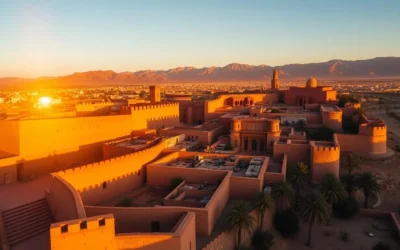✓ Accommodations✓ Flights✓ Rental Cars
Imagine stepping into a city that has been the heartbeat of culture and tradition for centuries. Fes, the ancient capital of Morocco, is a sensory overload in the best possible way, with its medieval medina, bustling souks, and breathtaking views of the Atlas Mountains.
As you wander through the narrow streets of the medina, you’ll feel like you’re traveling back in time. This UNESCO World Heritage site is home to some of the most well-preserved ancient architecture in the world, and its rich history is palpable in every corner.
You are about to explore the top attractions that make Fes a must-visit destination. From historic madrasas to vibrant markets, this guide will help you make the most of your time in this remarkable city.
Discovering the Cultural Heart of Morocco
As you step into Fes, you’re immediately immersed in a world of ancient traditions and vibrant culture. This city is a treasure trove of historical landmarks, cultural experiences, and traditional crafts.
Why Fes Should Be on Your Bucket List
Fes is a must-visit destination for anyone interested in history, architecture, and culture. The city’s ancient medina, a labyrinth of narrow streets and alleys, is one of the largest and most well-preserved in the world. With its rich history dating back to the 9th century, Fes is an old city that has something to offer every kind of traveler.
Brief History of Fes
Fes was founded in the 9th century and quickly became a center of learning with the establishment of Al-Qarawiyyin University in 859. This university is not only a significant historical landmark but also the oldest continuously operating university in the world. The city’s history is reflected in its architecture, with various dynasties leaving their mark on the city‘s layout and monuments.
| Century | Event | Significance |
|---|---|---|
| 9th | Founding of Fes | Establishment of the city as a major cultural center |
| 9th | Establishment of Al-Qarawiyyin University | Center of learning and intellectual inquiry |
| 13th | Development under various dynasties | Architectural and cultural advancements |
![]()
Navigating the Ancient Medina of Fes el-Bali
The ancient medina of Fes el-Bali is a treasure trove of experiences, but navigating it requires some know-how. As you wander through its narrow streets, you’ll discover a world of vibrant colors, enticing aromas, and rich history.
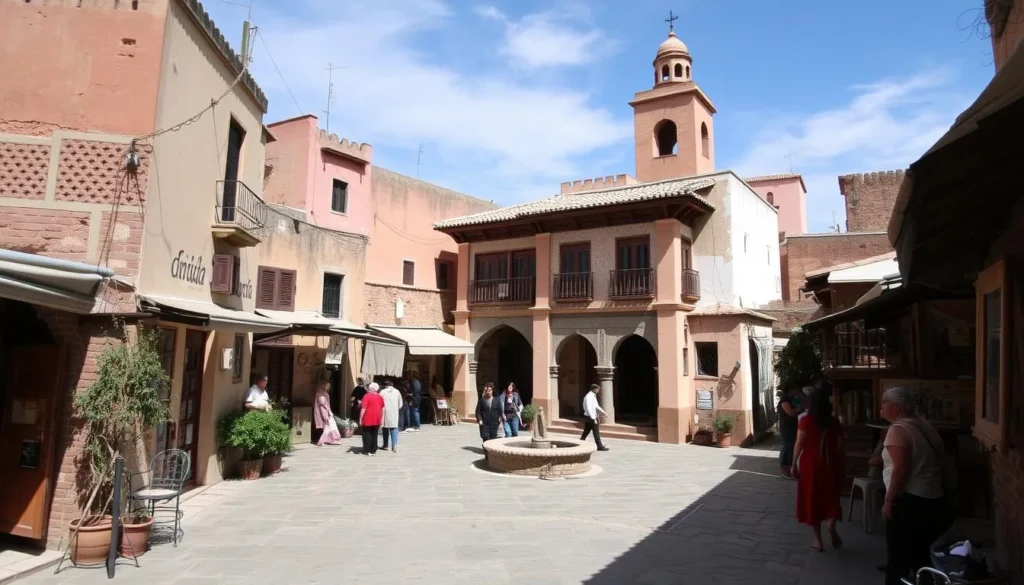
The World’s Largest Car-Free Urban Area
Fes el-Bali is the world’s largest car-free urban area, making it a unique and fascinating place to explore. With no cars to worry about, you can take your time to soak in the atmosphere and discover hidden gems. As you navigate the medina, make sure to follow the signs to avoid getting lost.
Tips for Not Getting Lost in the Labyrinth
Getting lost in Fes el-Bali is easy, but with a few tips, you can minimize the risk. First, consider hiring a local guide who can help you navigate the complex network of streets and share insights into the local culture. Alternatively, use major landmarks like Bab Bou Jeloud (Blue Gate) as reference points to find your way. Be cautious of scams involving “helpful” locals who may ask for money in return for their assistance. If you do get lost, approach a shop owner or restaurant staff for help rather than random people on the street.
To further aid your navigation, download offline maps or use apps designed for navigating Fes. Staying in a riad within the medina can also make it easier to explore, as you’ll be immersed in the local environment. By being prepared and aware of your surroundings, you can enjoy the medina without the stress of getting lost.
Marvel at the Blue Gate (Bab Bou Jeloud)
As you step into the ancient Medina of Fes, the first thing that captures your attention is the stunning Blue Gate, known as Bab Bou Jeloud. This iconic entrance is not just a gateway to the Medina; it’s an experience in itself, with its intricate designs and vibrant blue tiles that seem to glow in the light.
The Iconic Entrance to the Medina
Bab Bou Jeloud is more than just a gate; it’s a symbol of the rich history and culture of Fes. The gate’s intricate designs and vibrant blue tiles make it a must-visit attraction. As you approach the gate, you’ll notice the constant flow of people moving through it, creating a lively atmosphere.
Best Time to Visit and Photograph
To capture the beauty of Bab Bou Jeloud without the crowds, visit early in the morning, before 8 AM. The gate looks different throughout the day as the light changes, offering various opportunities for great photos. Late afternoon is another good time to visit, as the golden light enhances the blue tiles.
| Time of Day | Photography Tips | Atmosphere |
|---|---|---|
| Early Morning | Less crowded, ideal for clear shots | Peaceful |
| Late Afternoon | Golden light, vibrant colors | Bustling |
| Evening | Illuminated gate, unique perspectives | Lively, with locals gathering |
![]()
For those who enjoy people-watching, grab a mint tea at a nearby café and observe the gate’s activity. The gate’s beauty and the surrounding atmosphere make Bab Bou Jeloud a memorable part of your visit to Fes.
Experience the Famous Tanneries of Fes
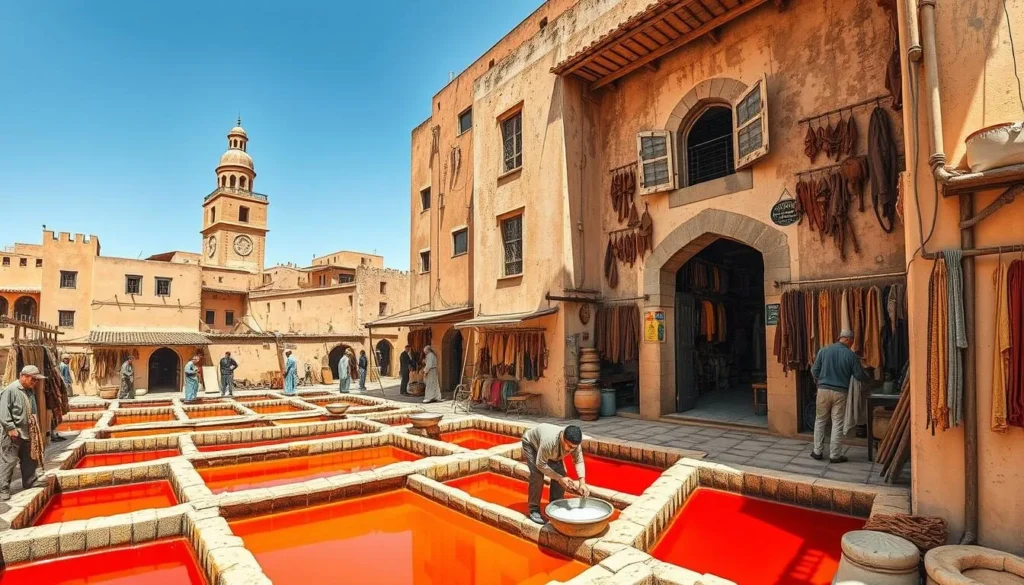
Fes is home to some of the world’s oldest tanneries, where you can witness the ancient art of leather production. The Chouara Tannery is one of the most famous and a must-visit attraction.
Chouara Tannery: The Oldest in the World
The Chouara Tannery is renowned for being one of the oldest tanneries globally, with a history that spans centuries. As you explore this site, you’ll be struck by the traditional methods still employed by the local craftsmen. The process involves various natural dyes and materials, creating a unique and sometimes overwhelming sensory experience.
Best Viewpoints and What to Expect
To get the best view of the Chouara Tannery, visit one of the surrounding leather shops, such as shop number 10, which is often recommended. Be prepared for the strong smell, but note that locals often offer a sprig of mint to counter the odor. It’s advisable to visit in the morning when the workers are most active or when the vats are freshly filled with dye. A tour of the tannery typically includes a sales pitch, so be prepared to negotiate if you’re interested in purchasing leather goods directly from the source.
Keep in mind that while the entrance is typically free, there’s an expectation to tip or make a purchase. Consider bringing your own mint or scarf to avoid potential charges for the “free mint” offered by the locals.
Visit the Historic Madrasas
The historic madrasas of Fes are a testament to the city’s rich cultural and architectural history. These ancient educational institutions are not only significant for their historical value but also for their stunning architecture.
Bou Inania Madrasa: A Masterpiece of Islamic Architecture
Bou Inania Madrasa is one of the most famous madrasas in Fes, known for its intricate stone carvings and ornate tile work. This 14th-century madrasa is a masterpiece of Islamic architecture, featuring a beautiful courtyard and a stunning minaret. As you explore the madrasa, you’ll be impressed by the exquisite craftsmanship that has gone into its construction. The madrasa’s entrance is particularly noteworthy, making it a great spot for photography.
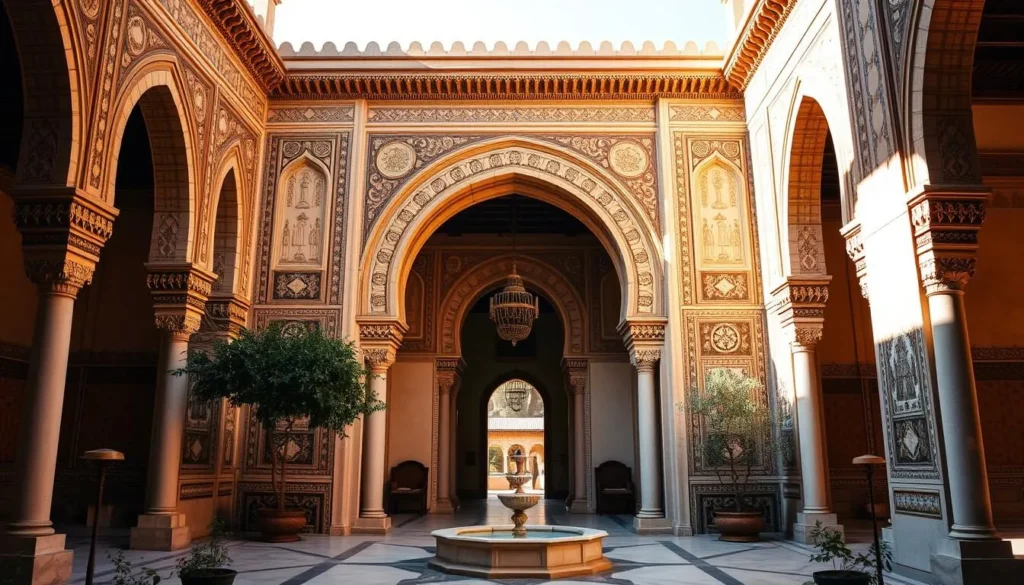
Al-Attarine Madrasa: Hidden Gem of Intricate Design
Al-Attarine Madrasa is another historic madrasa in Fes, built in the 14th century near the spice and perfume market. This smaller madrasa offers a more intimate experience compared to Bou Inania, with a stunning central courtyard and intricate tilework. You can explore the student cells that surround the courtyard to understand how scholars lived. The madrasa’s connection to the nearby perfume and spice markets is evident in its name, “attarine,” meaning “perfumer” in Arabic.
| Madrasa | Built | Notable Features |
|---|---|---|
| Bou Inania | 14th century | Intricate stone carvings, ornate tile work, stunning minaret |
| Al-Attarine | 14th century | Central courtyard, intricate tilework, bronze doors, cedar wood carvings |
Explore Al-Qarawiyyin University and Mosque
The Al-Qarawiyyin University and Mosque stands as a proud symbol of Fes’s heritage, attracting visitors from around the world with its grandeur and historical importance. As a functioning religious site and historical landmark, it offers a unique glimpse into the city’s rich past.
The World’s Oldest Continuously Operating University
Established in 859 AD, Al-Qarawiyyin University is recognized as the world’s oldest continuously operating university. Its significance extends beyond its age, representing a continuity of educational and religious scholarship. The university has played a pivotal role in the intellectual and cultural development of the Islamic world.
What Non-Muslims Can See and Experience
While non-Muslims are not permitted inside the mosque, the complex still offers much to appreciate from the outside. You can view the intricate entrance and admire the beautiful architecture. Peek through the ornate gates to catch a glimpse of the interior courtyard. For a better view, visit during times when the doors are open, or explore nearby rooftop terraces that offer a glimpse of the mosque complex. Hiring a local guide can enhance your experience by providing historical context and insights into the site’s significance.
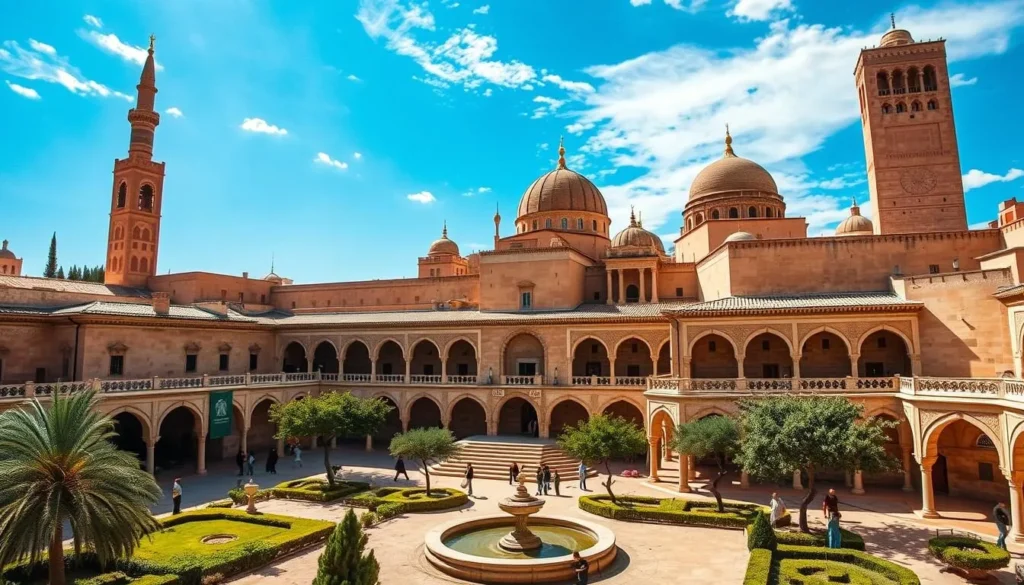
Fes, Morocco: Best Things to Do Beyond the Medina
Venturing beyond the Medina reveals the rich history and culture of Fes. While the ancient Medina is a must-visit, the city has much more to offer.
Royal Palace (Dar el Makhzen)
The Royal Palace, also known as Dar el Makhzen, is an impressive structure that serves as the official residence of the King of Morocco. Although the palace is not entirely open to the public, its grandeur can be appreciated from the outside. The palace is part of the city’s rich history and a significant area of cultural heritage.
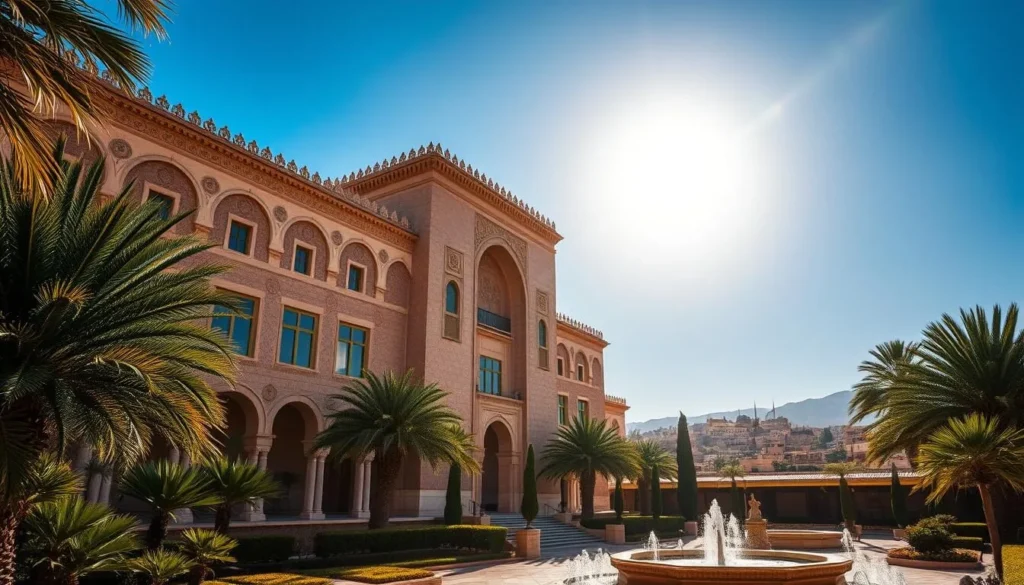
Mellah: The Historic Jewish Quarter
The Mellah, established in 1438, is one of the oldest Jewish quarters in Morocco. This historic area is characterized by its unique architecture, with balconies and windows facing the street, unlike traditional Muslim homes. As you walk through the Mellah, you’ll discover important sites such as the restored Ibn Danan Synagogue and the Jewish cemetery. The Mellah’s location near the Royal Palace offered protection to the Jewish community, and in return, they supported the sultan in times of conflict.
- The Mellah is a significant part of Fes’s history, showcasing the cultural exchange between Jewish and Muslim communities.
- Traditionally, the Jewish community in Fes was associated with various crafts and trades, including the gold trade.
- Over time, the population of the Mellah has changed, especially after the creation of Israel.
As you explore this historic quarter, you’ll gain a deeper understanding of the city’s diverse cultural heritage and its significance in the city‘s history.
Immerse Yourself in Local Experiences
As you wander through the ancient medina of Fes, you’ll discover that the true essence of Moroccan culture lies in its local experiences. To make the most of your visit, consider engaging in activities that allow you to connect with the local way of life.
Take a Traditional Moroccan Cooking Class
One of the best experiences you can have in Fes is learning the art of traditional Moroccan cooking. In a cooking class, you’ll not only learn how to prepare local dishes, but you’ll also gain insight into the cultural significance of food in Moroccan society. Spend a day mastering the preparation of tagines, couscous, and pastries, and take home the skills to recreate these dishes.
Relax in a Traditional Hammam
After a long day of exploring, there’s no better way to unwind than in a traditional hammam. This centuries-old ritual involves a vigorous scrub-down and relaxation in hot steam rooms, leaving you feeling rejuvenated. Hammams are not just about cleansing; they’re social spaces where locals gather, making them an integral part of Moroccan culture.
When visiting a hammam, be prepared for a unique experience. The process typically involves exfoliation, steam bathing, and sometimes even a massage. Many riads and hotels offer hammam services tailored for tourists, providing a more comfortable introduction to this traditional Moroccan practice.
Best Viewpoints in Fes
As you explore Fes, you’ll discover that the city’s true beauty is best appreciated from above. The ancient medina, with its intricate layout and historical landmarks, offers a unique visual feast when viewed from a higher perspective.
Marinid Tombs for Panoramic City Views
The Marinid Tombs are a great place to start your journey to the top. Perched on a hill overlooking the medina, these 14th-century tombs provide a panoramic view of the city. On a clear day, you can see the minarets and rooftops stretching out to the distant mountains. It’s a perfect spot to capture the essence of Fes in a single glance.
Rooftop Cafés for Sunset Watching
For a more relaxed experience, head to one of Fes’s many rooftop cafés. Establishments like Café Clock and The Ruined Garden offer stunning views of the medina, especially during the golden hour before sunset. As you sip on mint tea or enjoy local pastries, you can watch the city transform into a warm, golden hue. It’s a peaceful way to end your day of exploring, taking in the beauty of Fes from a great place to observe the city you’re looking at.
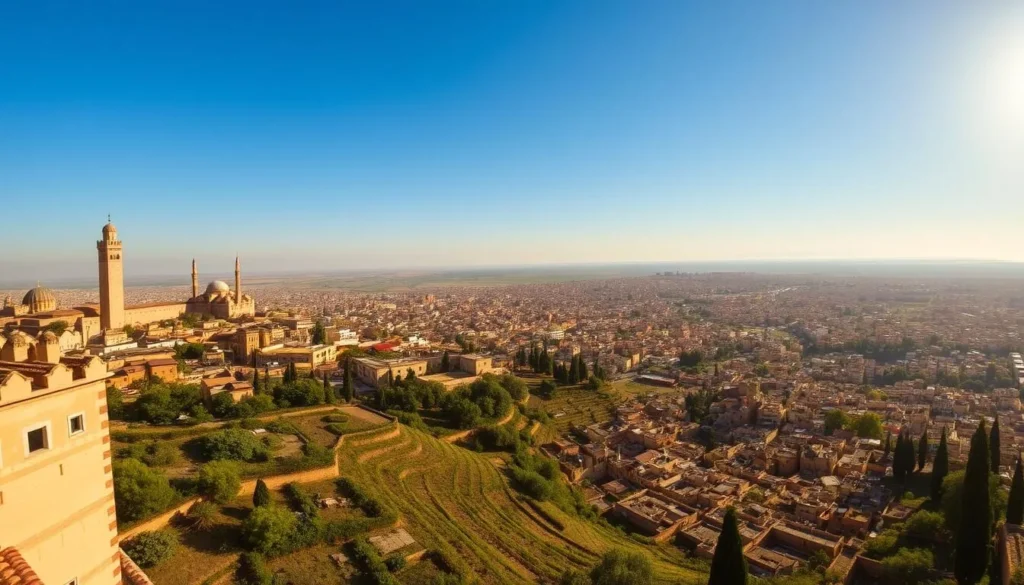
Shopping in the Souks of Fes
In the heart of Fes, the souks beckon with a wide array of goods, from leather goods to mint tea, embodying the essence of Moroccan culture. The souks are a labyrinth of narrow alleys filled with vendors selling everything you might need or want.
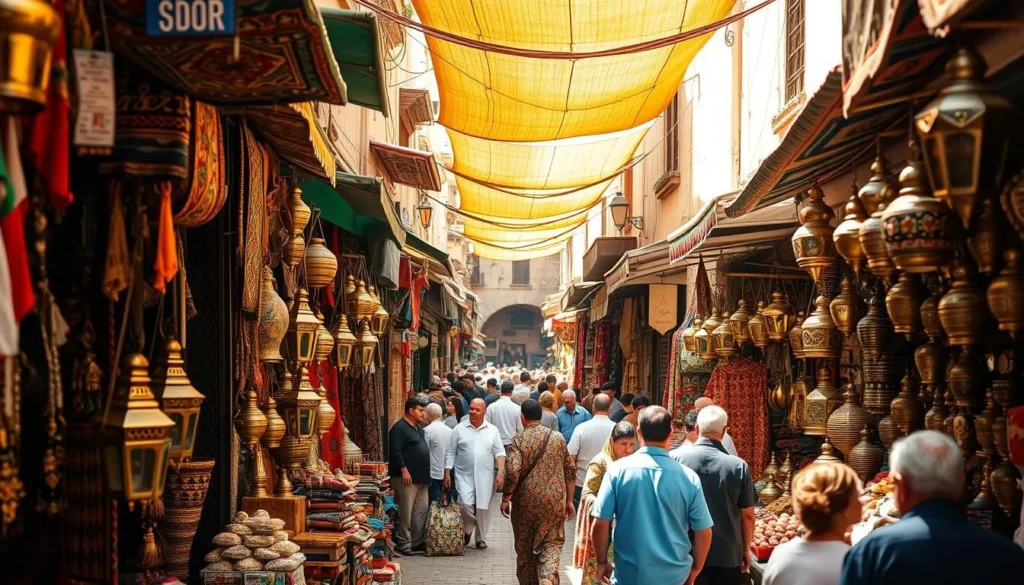
Navigating the Markets Like a Local
To navigate the souks effectively, it’s wise to go with a local guide or have a clear idea of what you’re looking for. The main streets are lined with carpet sellers showcasing stunning Moroccan designs. Haggling is part of the shopping experience, so be prepared to negotiate prices.
What to Buy: From Carpets to Ceramics
Fes is famous for its handicrafts, including blue ceramics, leather goods, metalwork, and textiles. When shopping for carpets, look for quality pieces with intricate designs. Prices can vary greatly, so it’s essential to know the market value. Consider purchasing practical items like spices, ceramics, and textiles for easier transport.
Where to Stay in Fes
When planning your trip to Fes, Morocco, choosing the right accommodation is crucial for a comfortable and enjoyable experience. Fes offers a diverse range of accommodations to suit every budget, from luxurious riads to budget-friendly guesthouses.
Experience a Traditional Riad in the Medina
Staying in a traditional riad within the Medina allows you to immerse yourself in the local culture. Riads like Riad Rcif & Spa and Riad Salam Fes offer stunning mosaics, carved wood details, and rooftop terraces overlooking the city.
Recommended Accommodations for Different Budgets
For luxury travelers, options like Palais Amani and Hotel Sahrai provide top-notch amenities and services. Mid-range accommodations offer a balance between comfort and authenticity, while budget-friendly riads and guesthouses still provide a taste of traditional Moroccan hospitality.
When choosing where to stay, consider the pros and cons of staying in the Medina versus Ville Nouvelle. Many traditional riads have multiple levels with no elevators, so accessibility is an important factor. Booking in advance is recommended, especially during peak travel times.
Planning Your Visit to Fes
Fes, a city steeped in history and culture, is best experienced during the shoulder seasons of March-May or September-November.
At this time, the weather is warm and sunny, ideal for a day tour exploring the ancient medina and vibrant souks.
You can easily reach Fes by train or flight, making it a great addition to your Moroccan itinerary, perhaps combined with a visit to the Royal Palace in Meknes.
With one best experience in mind, Fes promises an authentic and rewarding travel experience.
The above is subject to change.
Check back often to TRAVEL.COM for the latest travel tips and deals.
